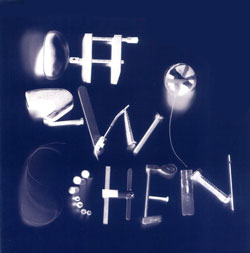
"Dazwischen" is a word that stands for "in between", which is rather explicative of what Sebastian Lexer does. A former music student at London's Goldsmith College, where he came from Germany, the composer has been developing his skills under, and collaborating with, fundamental tutors such as John Tilbury and Eddie Prevost, both contributing — together with Ian Stonehouse — to the particularly interesting and informative liner notes contained in the CDs booklet. Indeed this is his first solo recording after years of intense exploration and live performances . Make no mistake: we're talking about a masterpiece, definitely one of the best debut releases in this sonic area.
To specify the microcosm through which he builds a world of concentrated occurrences, subtle overtones and vibrating halos, Lexer utilizes the definition "piano+". The instrument is augmented by a laptop fueled by Max software, the rest of the setup consisting of microphones, speakers ("set inside or very close to the piano") and several means for controlling the resulting processes. This system permits a considerable measure of control to the performer, yet extraneous or unpredictable elements — including those derived from eventual instrumental partners — also have a say. Once captured by the mikes and processed this generates a palette of timbres that gets further modified via extreme equalization, ring modulation, granulation and so forth. Parts of the ensuing sounds may be stored and re-triggered by subsequent events in a sort of acoustic cybernetic procedure that gives birth to some of the most beautifully natural resonances heard in a long time.
In Civilization Phase III, Frank Zappa had theorized — trying to reproduce it musically — the concept of "life in a piano". This image, in an entirely different context and with completely opposite results in terms of sonority, is exactly what flashed in my mind while analyzing this work. Lexer, although maintaining the basic tonalities recognizable, is especially able in evoking a vast range of sensations and colors — intimate abrasiveness to elegiac melody, concrete inconveniences to imposing reverberation — without losing sight of the value of a sequence of regular notes. In "Abscissa And Ordinate" a whole cosmos of prepared, computerized and unadorned pitches is marvelously synthesized, a single humming tone lingering for stretched segment of awesome suspension amidst meagre rings and delicate-to-hammering sparse hits. It's during these situations that one is tempted to proceed with the typically useless maths of association, yet this perceptive musician seems to have found the ultimate terrain for growing an artistic vision into a fully fledged individual personality, letting the audience preserve a clear mental picture of what happens despite the obvious incongruity of this music against the notion of negligent listening. In that sense, Dazwischen is an even more stunning achievement.
Comments and Feedback:
|



